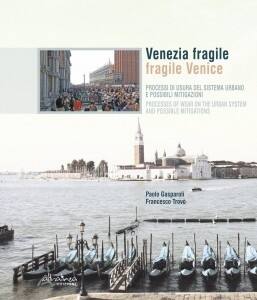Venice and its Lagoon rest in fragile balance. Findings of new study on the World Heritage site

A presentation of the “Fragile Venice” study, which touches on some of the most serious future challenges faced by the city of Venice and its Lagoon, will take place today, 12 December (2.30 pm.), in Venice, at the sala del Piovego in the Doge’s Palace. As the city’s urban fabric undergoes deep structural changes, this is the first enquiry of its kind into the wider effects of tourism and shifting patterns of residency, and their future implications for the conservation of this World Heritage site.
The “Venice and its Lagoon” site was inscribed on the UNESCO World Heritage List in 1987, in recognition of its unique historical, archaeological, urban and artistic heritage and exceptional cultural traditions, integrated into an extraordinary natural landscape.
The fragile balance of this environment is the subject of the 2012-2018 Management Plan for the “Venice and its Lagoon” site, which aims to protect and enhance the Site through integrated policies for sustainable development. The primary threats and issues identified by this plan are wave motion (moto ondoso) induced by wind and water traffic, the erosion of the lagoon bed compounded by the illegal harvesting of shellfish, pollution, the conservation of man-made heritage, the progressive loss of resident population in the historical centre and on the islands and growing, almost unsustainable, levels of tourism.
The “Fragile Venice” study investigates the processes that contribute to the degradation of the urban system and identifies possible solutions. It is funded by the Italian Ministry of Cultural Heritage and Activities (MiBAC), and provides support for the implementation of the Management Plan for Venice by analyzing the key elements that affect this historically important area, with a view to providing an appropriate and effective response and debunking many commonly held beliefs.
The study focuses on the impact of human activity on the urban and natural environment of Venice and its Lagoon, physically and in terms of behavior, perception and wider demographic trends. Issues raised include waste disposal, transport, tourism, urban planning and the ever-contentious cruise liners that cut a path through the city, towering over its buildings.
The publication will be introduced by its authors, Paolo Gasparoli and Francesco Trovò. A discussion will follow, moderated by journalist Alberto Vitucci (La Nuova Venezia) and featuring speakers Renata Codello (superintendent for Architectural Heritage and Landscape in Venice and its Lagoon), Domenico Patassini (Co.Ri.La.), Guido Zucconi (IUAV University of Venice), and Philippe Pypaert of the UNESCO Regional Bureau for Science and Culture in Europe, Venice (Italy).
The study is the result of work conducted by the Superintendency for Architectural Heritage and Landscape in Venice and its Lagoon, Venice Municipality and researchers from Milan Polytechnic.

